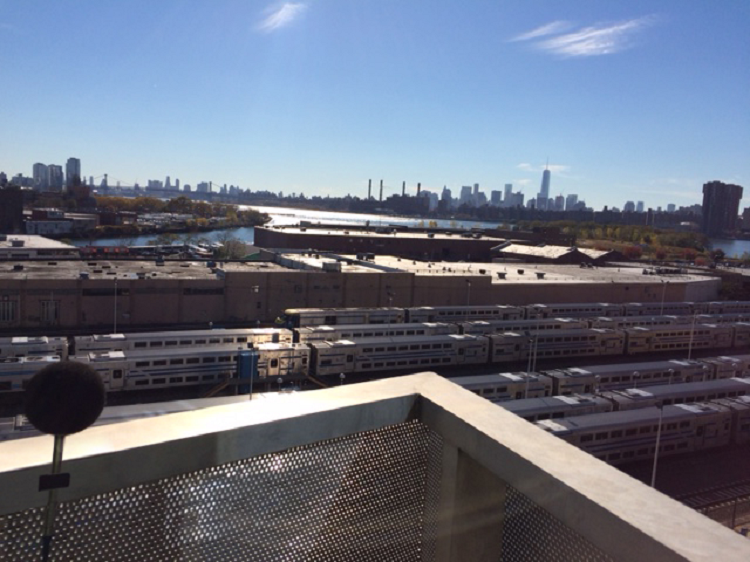LIRR Improvements in Long Island City Yard
Project Description
Paul Carpenter Associates, Inc (PCA) conducted a transit noise impact assessment associated with the Long Island Rail Road (LIRR) Resiliency Improvements in the Long Island City Yard project. As a result of significant flooding and infrastructure damage caused by Super Storm Sandy, projects were progressed to "storm harden" the yard against future flooding. One major project component was the design and construction of a perimeter protection wall.
In order to determine existing noise exposure within the project study area, short- and long-term noise measurements were performed in four locations. Traffic data collection and vehicle classification counts were also performed. While project improvements would not result in a change in service, operations or the number of diesel or electric trains in the yard, the LIRR requested review of the effects of the proposed perimeter protection wall on future noise levels. As such, screening analyses were performed to determine whether perceivable changes in noise levels would result due to reflections caused by the proposed walls. Since the Federal Transit Administration's (FTA) Transit Noise and Vibration Impact Assessment guidance manual (FTA-VA-90-1003-06, May 2006) does not include methodology specifically related to the evaluation of perimeter protection walls, PCA performed parallel and single wall reflections screening analyses following general best practices provided within the Federal Highway Administration's (FHWA) Highway Noise Barrier Design Handbook (FHWA-EP-00-005 DOT-VNTSC-FHWA-00-01, February 2000), as well as guidance from the Acoustics Facility at the U.S. Department of Transportation John A. Volpe National Transportation Systems Center.
Due to the proximity of existing noise sensitive land use to the Long Island City yard, FTA Noise and Vibration General Assessments were performed to address the heaviest operations associated with construction of project improvements, which included the installation of sheet piles, drilled shafts and jet grouting. In addition to the individual construction scenarios, cumulative operations were evaluated. Based on impacts predicted, recommended noise and vibration control measures were included within the Transit Noise and Vibration Impact Assessment report prepared for the project.
Subsequently, a Vibration Control Officer (VCO) was present on-site to perform monitoring and reporting tasks during sheet driving operations over the Amtrak East River Tunnel. Three state-of-the-art vibration monitors were installed at predetermined locations, chosen based on proximity and sensitivity to construction operations. Monitoring protocols and locations were approved by LIRR and Amtrak prior to commencement of construction activities. The vibration monitors continuously recorded (peak particle velocity) PPV levels at 1-minute intervals and wirelessly transmitted recorded data to a web interface, which was specifically created for the project to allow authorized LIRR official with access to real-time vibration data. Vibration monitors were programmed to automatically send alerts to the VCO and field engineers in the event vibration levels exceeded Action or Stop Work levels. The VCO prepared a detailed Daily Vibration Monitoring Log at the end of each work day which was submitted to LIRR personnel.
